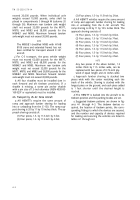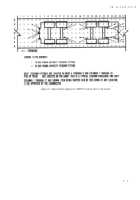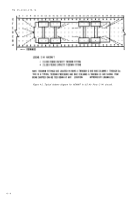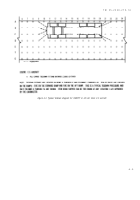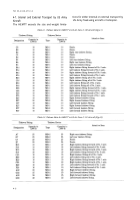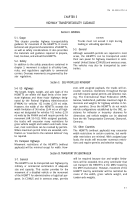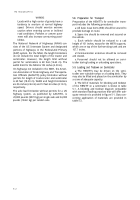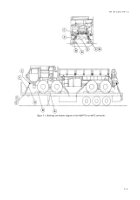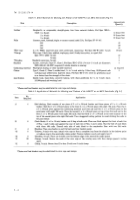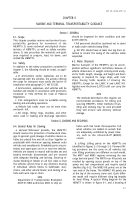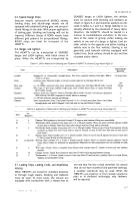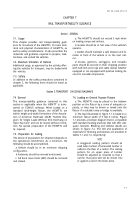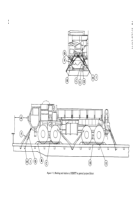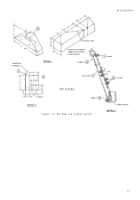TM-55-2320-279-14 - Page 28 of 46
TM 55-2320-279-1 4
CHAPTER 6
MARINE AND TERMINAL TRANSPORTABILITY GUIDANCE
Section I. GENERAL
6-1. Scope
This chapter provides marine and terminal trans-
portability guidance for movement of the
HEMTTs. It covers technical and physical charac-
teristics of HEMTTs, as well as safety consider-
ations. It also prescribes the materials and guid-
ance required to prepare, load, tie down, and
unload the HEMTTs.
6-2. Safety
In addition to the safety precautions contained in
chapter 3, the following should be noted, as appli-
cable:
a.
If ammunition and/or explosives are to be
transported with the vehicles, the activity offering
the cargo for transport must notify the carrier in
compliance with paragraph 2-7, AR 55-228.
b.
Ammunition, explosives, and vehicles will be
handled and stowed in accordance with provisions
contained in Title 46/Title 49, Code of Federal
Regulations.
c. Fire extinguishers must be available during
loading and unloading operations.
d.
Vehicle fuel tanks must not be more than
one-fourth full.
e.
All slings, lifting rings, shackles, and other
items used in loading and discharge operations
should be inspected for their condition and ade-
quate capacity.
f.
All personnel should be cautioned not to stand
or walk under vehicles being lifted.
g. All lifts should have at least two tag lines at-
tached to control the swing of the vehicles while
suspended.
6-3. Water Shipment
Marine transport of the HEMTTs can be accom-
plished without significant restrictions because of
vehicle dimensions or weight. Hold-by-hold analy-
sis for hatch length, stowage, and height and boom
capacity is required for cargo ships, with most
ships having holds capable of stowing the
HEMTTs. Except for the LARC V and LARC XV,
logistics-over-the-shore (LOTS) craft can carry the
HEMTTs.
NOTE
The methods described in this chapter are
recommended procedures for lifting and
securing HEMTTs. Other methods of han-
dling and stowing may be used provided
they will ensure safe delivery without
damage.
Section Il. LOADING AND SECURING
6-4. General Rules for Stowing
a. General.
Whenever possible, the HEMTTs
should receive the protection of below-deck stow-
age. In general, good stowage of vehicles means ve-
hicles are placed fore and aft as close ‘together as
practicable with minimum spacing between outer
vehicles and sweatboards. Breakable parts are pro-
tected, and spare parts are in or near the vehicles.
Vehicles are stowed in neutral with brakes set and
battery terminals disconnected and are secured
with adequate blocking and lashing. Securing in-
cludes blocking of wheels on all four sides so that
the vehicles cannot move in any direction; bracing
of individual vehicle blocks to bulkheads, stan-
chions, and other vehicle blocks; and lashing of ve-
hicle with wire rope or chain.
NOTE
Department of Transportation Exemption
(DOT-E-7280) authorizes DOD to ship ve-
hicles with fuel tanks three-quarters full
when vehicles are loaded on vessels that
are adequately ventilated by power blow-
ers, such as the roll-on/roll-off (RORO)
vessels.
b. Lifting.
Lifting points on the HEMTTs are
identified in figures 2–2 through 2–5. Forward lift-
ing provisions are the same on all vehicles, but
rear lifting provisions are different on each model.
The M977 and M985 requires removing the rear
cargo bed end panel. The M978 rear lift points are
reached by opening access panels on top of the
pump and reel compartment and require special
shackles (fig 6–2). The M983 lift points are at the
rear ends of the frame. The M984E1 lift points are
at the top of the recovery crane unit. Each differ-
ent model will require different sling leg lengths
for level lifting. A typical lifting diagram for the
HEMTT is shown in figure 6-1, and a drawing of
6-1
Back to Top

